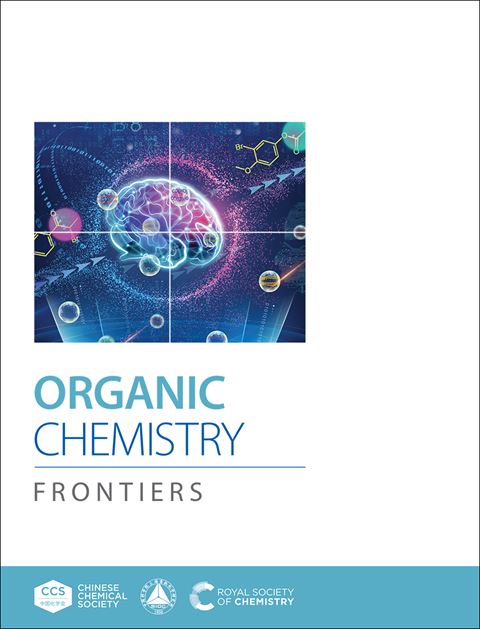通过碳键和氢键的协同作用实现的可光敏阴离子识别
IF 4.7
1区 化学
Q1 CHEMISTRY, ORGANIC
引用次数: 0
摘要
探索具有可控可调性的光响应性非共价相互作用对于推进超分子识别和智能动态材料具有重要意义。在此,我们报道了基于腙的光响应受体,该受体结合了碲化唑衍生的氯键供体,用于光切换阴离子结合。该体系发生了双向E/Z光异构化,调节了分子内的NH···N氢键,从而增强了Z-异构体中碲中心的亲电性。这种结构的变化使得z -异构体对卤化物阴离子(Cl -, Br -, I -)的结合力显著增加,其结合常数比e -异构体高20倍。吸电子取代基的加入放大了极化,允许控制结合强度和选择性。此外,阴离子结合促进了Z→E光异构化,在识别和结构转换之间提供了反馈机制。该研究展示了一种结合可逆光化学控制和协同非共价相互作用调制的新策略,为开发刺激响应的超分子系统提供了有效途径。本文章由计算机程序翻译,如有差异,请以英文原文为准。
Photoswitchable Anion Recognition via Synergy between Chalcogen Bonding and Hydrogen Bonding
Exploring photoresponsive noncovalent interactions with controllable tunability is of great significance for advancing supramolecular recognition and smart dynamic materials. Herein, we report light-responsive hydrazone-based receptors incorporating a telluroazole-derived chalcogen bond donor for photoswitchable anion binding. The system undergoes bidirectional E/Z photoisomerization, which modulates an intramolecular NH···N hydrogen bond and hence enhances the electrophilicity of the tellurium center in Z-isomer for chalcogen bonding. This structural change enables significant increase in the binding affinity of Z-isomer toward halide anions (Cl⁻, Br⁻, I⁻), with binding constants up to 20 times higher than E-isomer. The incorporation of electron-withdrawing substituents amplifies the polarization, allowing the control over binding strength and selectivity. Moreover, anion binding facilitates Z→E photoisomerization, offering a feedback mechanism between recognition and structural switching. The study shown here demonstrates a new strategy combining reversible photochemical control and synergistic noncovalent interactions modulation, offering an effective approach for the development of stimuli-responsive supramolecular systems.
求助全文
通过发布文献求助,成功后即可免费获取论文全文。
去求助
来源期刊

Organic Chemistry Frontiers
CHEMISTRY, ORGANIC-
CiteScore
7.90
自引率
11.10%
发文量
686
审稿时长
1 months
期刊介绍:
Organic Chemistry Frontiers is an esteemed journal that publishes high-quality research across the field of organic chemistry. It places a significant emphasis on studies that contribute substantially to the field by introducing new or significantly improved protocols and methodologies. The journal covers a wide array of topics which include, but are not limited to, organic synthesis, the development of synthetic methodologies, catalysis, natural products, functional organic materials, supramolecular and macromolecular chemistry, as well as physical and computational organic chemistry.
 求助内容:
求助内容: 应助结果提醒方式:
应助结果提醒方式:


